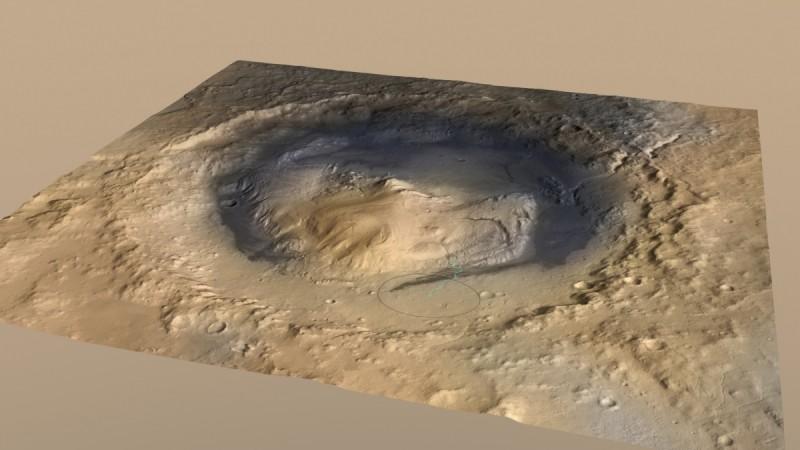
Mars once had a vast lake that could have been the home for microscopic life, NASA scientists said on Monday after the Curiosity rover collected evidence that a water body existed at the bottom of an enormous crater for millions of years.
The rover, which has been trekking on the red planet's Mount Sharp in the Gale Crater for a year, found enough data to show that rivers flowed into the bottom of the crater, where a large lake or several lakes were formed.
While it was known last year that Mars did once have a lake, it was not clear if the lake existed long enough for life to grow in it.
However, the new discovery points to the fact that the Gale Lake existed for millions of years and thus had the potential to host microbial life, scientists announced on Monday.
"The size of the lake in Gale Crater and the length of time and series that water was showing up implies that there may have been sufficient time for life to get going and thrive," NASA's Mars Exploration Program scientist Michael Meyer said at the conference, Reuters reported.
Curiosity, which landed on the planet two years ago, had found that Mars did have the right conditions to support life though it had not stumbled upon hard evidence as it has now.
In the latest photos it has sent back to Earth, the rover has discovered water-deposited sediments and signs of water currents resembling Earth's river deltas, which is also believed to have led to the formation of the three-mile-high Mount Sharp in the centre of the crater.
The formation and thickness of the rocks proves that the Gale Crater must have been home to a lake for millions of years, and the fact that Mars sustained a water body that long hints at a "hydrological cycle to keep the atmosphere humid," NASA said.
Such humidity "practically requires a standing body of water, like an ocean," according to NASA, thus suggesting that Mars must have had a ocean-like water body that could have bred life.















